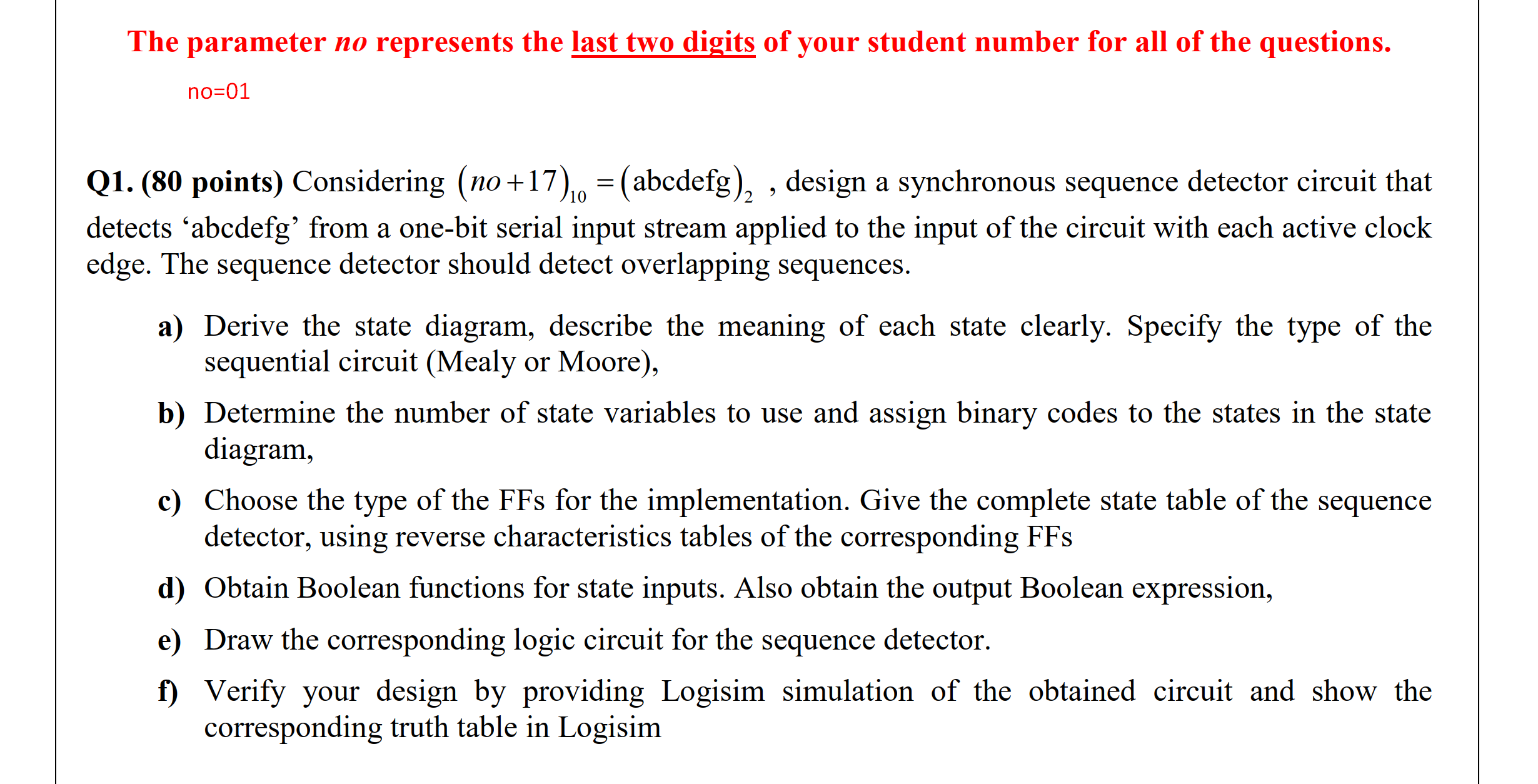Answered step by step
Verified Expert Solution
Question
1 Approved Answer
Q 2 . ( 2 0 points ) Assign 1 0 #no h to 0 0 ( #no ) : 0 4 0 0 h
Q points Assign #no h to #no:h and #no h to :#no h write a program that store;
a The sum of these two numbers in #no:h
b The difference of these two numbers in #no:h
c The product of these two numbers in #no:h
d After the division of these two numbers, the quotient in #no:h and remainder is in
#no:h
Ex: for :
no
NOTE: You have to add comment line to your code that explain your code.The parameter no represents the last two digits of your student number for all of the questions.
Q points Considering design a synchronous sequence detector circuit that
detects 'abcdefg' from a onebit serial input stream applied to the input of the circuit with each active clock
edge. The sequence detector should detect overlapping sequences.
a Derive the state diagram, describe the meaning of each state clearly. Specify the type of the
sequential circuit Mealy or Moore
b Determine the number of state variables to use and assign binary codes to the states in the state
diagram,
c Choose the type of the FFs for the implementation. Give the complete state table of the sequence
detector, using reverse characteristics tables of the corresponding FFs
d Obtain Boolean functions for state inputs. Also obtain the output Boolean expression,
e Draw the corresponding logic circuit for the sequence detector.
f Verify your design by providing Logisim simulation of the obtained circuit and show the
corresponding truth table in Logisim

Step by Step Solution
There are 3 Steps involved in it
Step: 1

Get Instant Access to Expert-Tailored Solutions
See step-by-step solutions with expert insights and AI powered tools for academic success
Step: 2

Step: 3

Ace Your Homework with AI
Get the answers you need in no time with our AI-driven, step-by-step assistance
Get Started


